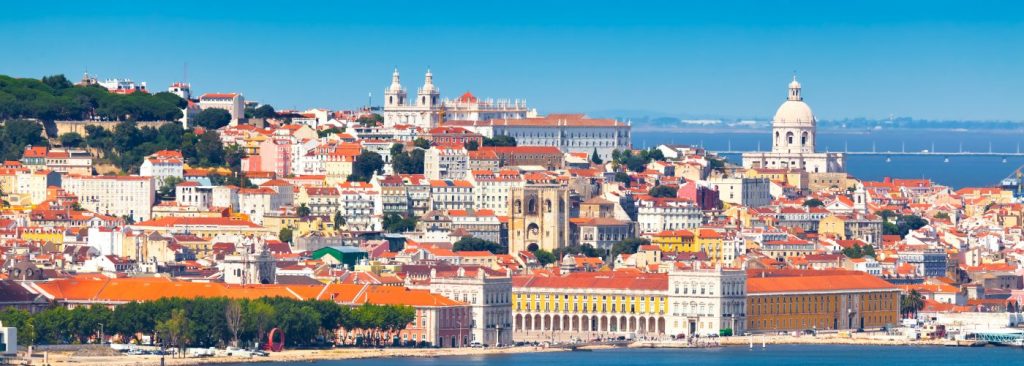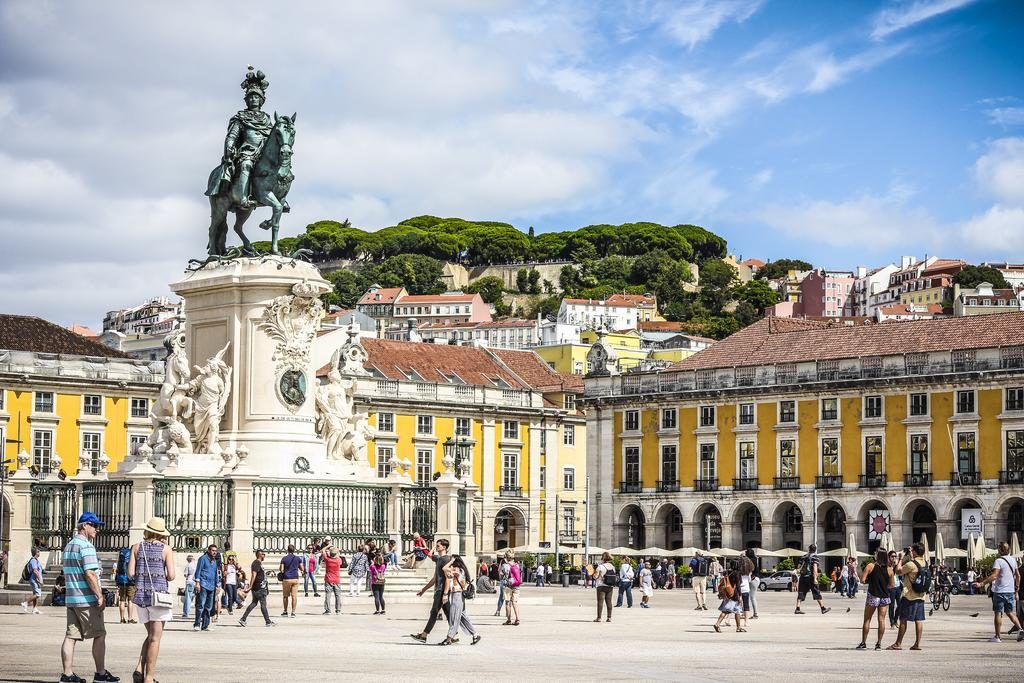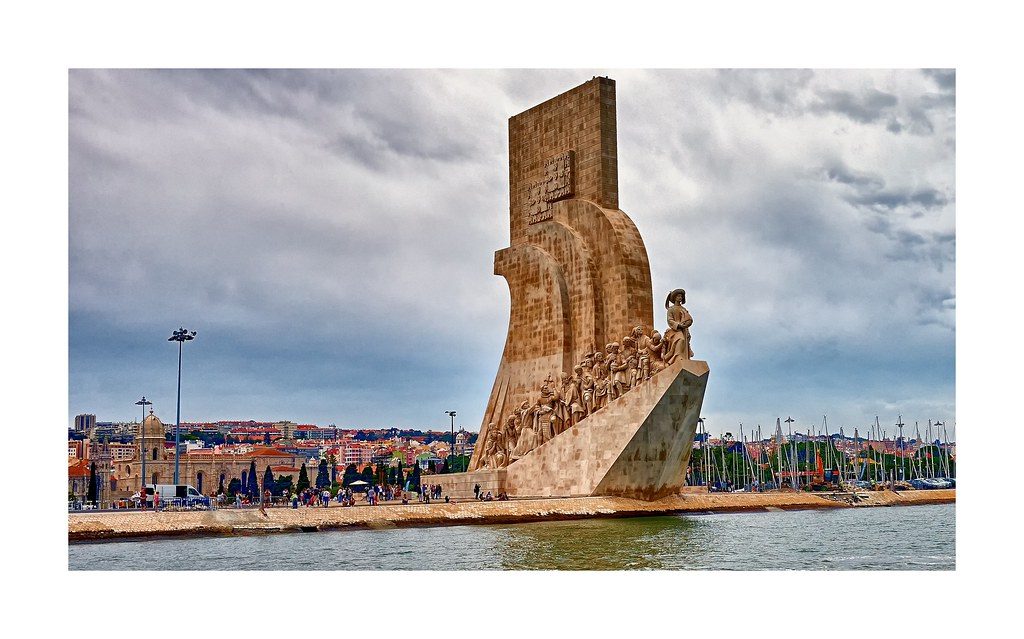Lisbon in Portugal is a beautiful city in which there is a lot to do and see. On this website you will find all the activities and excursions to do in Lisbon, Porto and Portugal to discover the country. Here you can book directly the visit of your choice among the visits that have had only positive opinions, on the dates you have chosen, at very competitive prices and with a guide who speaks your language.
But also information and advice on every conceivable visit to spend a good holiday and enjoy each of your excursions. in the Portuguese capital or the country. You will also need to find accommodation, so I will gradually propose pages presenting the most beautiful hotels in Lisbon and Portugal but also the most beautiful luxury villas that can be found in the region.
Below you will find information on the most beautiful things to visit in Lisbon, before you dive into our many pages to prepare your holidays in Portugal, its capital and Porto.
Visit the city of Lisbon

We can say that Lisbon is a city in which we want to spend a lot of time and it is certainly a place in which we quickly feel very comfortable. The first time you visit Lisbon, you will discover a region with a very special atmosphere. The capital of a former great maritime power, formerly very modest, which has been able to reveal itself while remaining absolutely charming.
The Lisbon region and the rest of Portugal are just as beautiful to visit: Sintra, Cascais, Porto. And everywhere you will notice that people are caregivers, warm and caring. We show you your way, give you advice, answer your questions. During your first visit, you will get to know the city and its main districts such as Alfama or Belem, discover the facades of the houses by getting lost in the alleys or go to the different Miradouro of the city to discover the most beautiful views of the city.

Lisbon extends over seven steep hills, a natural environment for the city as well as water for Venice. You will see that to visit the capital Portuguese, you can avoid the steep cobbled streets and take modern elevators, taxis or tuk tuk that will make your journey easier.
Visit the Avenida da Liberdade in Lisbonne
In 1879, the Avenida da Libertad (Freedom Avenue) was built in Lisbon, very similar to the Parisian boulevards. The width of this boulevard is ninety meters from Restauradores Square to Marquis Pombal Square. In 1886, the main works in the street were completed and an obelisk was erected on the Restauradores Square to commemorate Portugal’s independence from Spain in 1640, on which occasion Lisbon first named the Avenida da Liberdade.

Walking along the boulevard doesn’t take much time but it’s better not to rush, sit in the shade of the trees towards one of the many shops and look around. You can stroll through the local shops, enjoy the wonderful atmosphere, feel good and discover all the the world’s most famous brands. There are also many restaurants and cafés. The decoration consists of a wide variety of 19th century buildings, including the facades overlook Avenue da Liberdade. The boulevard’s sidewalks are works of art, Portuguese masterpieces made of different ornaments.
There are several interesting things to see on the boulevard such as the First World War Memorial. The monument dedicated to Almeida Garrett, writer, poet and politician, founder of romanticism in Portugal, who lived from 1799 to 1854 is remarkable. He has worked as a theatre inspector, has was a Member of Parliament and Minister of Foreign Affairs. He was a brilliant personality. In 1851, he received the title of Viscount for his services to his country.
Many tourists argue about where to start a visit to Avenida da Liberdade in Lisbon. Some say that this should be done from the bottom up. high, i.e. from Restauradores to Pombal, others prefer the opposite direction. The monument to the Marquis offers a magnificent view of the avenue and boulevard, from where you can see the roofs of the Baixa district and the Tejo.
Visit the tramway 28 in Lisbon
Each city has its own characteristics, thanks to which it becomes recognizable to the world. In Paris the Eiffel Tower, in Moscow the cathedral of Intercession, London Tower Bridge. It is impossible to confuse, these sites are mainly architectural structures that have become symbols of cities. But there are also symbols of different origins: the red double-decker bus in London or the Lisbon tramway.

The tramway is the oldest form of urban transport in the capital. Originally, it was driven on horseback. In Lisbon, urban lines on horseback appeared in 1873 and later in 1901, horse traction was replaced by electric traction.
In all European cities, the tramway network was actively developed until the middle of the 20th century. Lisbon was no exception to the rule. In 1950, 26 routes were developed in the city, on which 405 cars were driven, some with trailers. With the advent of the subway, the tramway slowly began to disappear from the streets because the first metro lines essentially duplicated the tramway lines. In Lisbon, a problem serious arose for transport in the old city with low houses and narrow streets.
Another circumstance has contributed to the preservation of this exotic form of urban transport. During the last two decades of the 20th century, the concept of urban planning has changed considerably in many European countries. Environmental problems have begun to appear. That’s why the areas pedestrians have begun to organize themselves throughout the city centre. The Lisbon tramway was lucky – it is part of the ecological concept and has so it has been preserved.

Currently, there are 6 routes in the city, on which 58 trams operate. But the tramway would not be a symbol of Lisbon if it were not for an interesting circumstance. Only 10 out of 58 trams are modern vehicles. They made it possible to organise a high-speed line number 15, along the flat part of the old town from Rossio and Figueira squares to Commerce Square, then along the Tejo dike to Belem and a little further on. The reste des tramways is a modernized version of the old ones manufactured at the beginning of the last century. They operate on coastal and gradient routes in Lisbon, with everything necessary to ensure passenger safety: front and rear counterweights for stable driving in curves, reliable brakes and noise suppression devices.
Lisbon is mainly located on multi-level hills, so there are more trams. Tourist route number 28, the most popular, crosses the streets of the mountains. The width of the streets in some places is not more than 5 to 6 metres. Tramway 28 offers visitors to Lisbon a tour original and unforgettable tourist.There is another type of transport in Lisbon, whose cars look like a tramway: they are funiculars built in 1884-1892. There are three lines of this urban transport, they are intended for ascending and descending areas with a more spectacular difference in altitude.
Visit Cape Roca in the Lisbon region
Cape Roca is the most western border of the Old World. It is located 40 km from Lisbon and 18 km from the suburb of Lisbon, the city of Sintra. You can reach the cap by bus, which leaves from Sintra station. The place is really romantic but exceptionally windy. Cap Roca is a dominant rock the Atlantic Ocean from a height of 140 meters. You will rarely see such a quantity of water, a truly infinite expanse opens before you. Somewhere in front of you is America. And all this under the gusts of wind and the sound of roaring waves breaking on the rock.

A cliff leading to the ocean is surrounded by a fence near which it is not recommended to approach. But look down on the stones that come out of the water, on which the waves overlap, is a fascinating and hypnotizing spectacle.
Directly at the stele, the cliff is enclosed by a stone parapet, forming an observation platform where tourists can enjoy the view. But he is interesting to stroll along the cliff and along the wild coast. You can even go down to the water along a winding path. A stele The memorial, surmounted by a Christian cross with a stone plaque, is located at the bottom, on which are stamped the geographical coordinates of this place.
You can also find a lighthouse to guide passing ships, a post office, a hotel, a restaurant and a souvenir shop. The lighthouse is the oldest building on the cape, it was built on the orders of the Marquis of Pombal during the restoration of Lisbon after the 1755 earthquake. The height of the lighthouse is 22 metres, its signal is visible quite far from the coast, it is said to be visible up to 50 kilometres. Unlike most automated lighthouses in Portugal, due to its particular importance for navigation, the Cape Roca lighthouse has its supervisor.
During the night, the hotel is mainly used by tourists to watch the sunset, spend the night and morning there, explore the romantic and magnificent sites of Portugal. The sunsets are extraordinarily beautiful. The sun, the changing colours that quickly sink into the ocean.
In the gift shop, you can buy a personalized certificate to commemorate your visit to the westernmost point of Eurasia.
Visit the Tejo in Lisbon
The largest river in the Pyrenees rises in the Spanish mountains at an altitude of 1,500 metres. The Spanish river is full of rapids with a narrow channel over a length of 716 kilometres. When it crosses the border between Spain and Portugal, it changes its name to Tejo.

Tejo’s length in Portugal is 275 kilometres. After this distance, the river flows into the Atlantic Ocean, on the shore where it is located in Lisbon. The capital of Portugal is therefore located on the banks of the Tagus River. Unlike Spain, Portugal, the Tagus is navigable. The channel is wider.
From Lisbon, along the waterway, you can reach the city of Abrantes. The Tagus has always been of paramount importance to the country – it is the oldest means of communication, which has played a crucial role in establishing and developing trade links between the ocean coast and the continental regions. Irrigation systems created from the Tagus waters irrigate the State’s agricultural lands; this branch of the economy remains one of the main ones in Portugal and during the dry months of the year, the importance of the river for irrigation is invaluable.
It is curious that birds winter on its shores, especially starlings and blackbirds, which can easily find the food they need. The waters of the river in the Lisbon region are exceptionally clear. It is even more pleasant to visit the Tagus by organizing a small cruise. In Lisbon, there are several moorings along the coast. You can discover an interesting and unusual view of the city of Lisbon from the river side.

Two remarkable bridges cross the river in the Lisbon region. One of them, the April 25 bridge, owes its name to the unblown military coup d’état of 1974 blood. Previously, it was called Antonio Salazar. It’s a suspension bridge that looks like the Golden Gate of San Francisco. The second bridge, Vasco da Gama, is the longest in Europe. It is 17.2 kilometres long, 10 kilometres of which are above the water. It was built in 1998, year of the 500th anniversary of the discovery of India and for the occasion of the Universal Exhibition.
Visit the monument to discoveries in Lisbon
The Monument to Discoveries in Belem, a suburb of Lisbon, is an architectural structure of white limestone 53 metres high and 53 metres wide. of 20 meters. On the nose of the caravel, a sculpture of the legendary of a great Navigator who made great geographical discoveries. caravel have been reported 32 other personalities of the golden age of Portugal, involved in the greatness of the country.

The monument mainly presents Portuguese navigators such as Vasco da Gama, Bartolomeu Dias, Fernan Magellan, Diogo Can Pedro Alvarish Cabral, Afonso Albuquerque: a total of 16 sculptures of heroic sailors. But there are also representatives of other professions who lived and worked at that time – people who writers and poets, especially Luis de Camoes, cosmographers who studied the structure of the universe, missionaries and monks, an artist and mathematician, a soldier and members of the royal family.
The monument to discoveries has 32 men and one woman. The knowledge of the names of the people represented on the monument and their history filled with a a visit to this Lisbon monument and will allow you to take a closer look at the characters, their poses and ultimately take a real pleasure.

To the right of Heinrich’s sculpture is the kneeling figure of his younger brother, Fernando, the sixth son of King João I and Philippa de Lancaster. In 1437, participating with his brothers in one of the military campaigns in North Africa, he was captured by the Arabs, who offered the Portuguese in exchange of the child the city of Ceuta, conquered in 1415. Fernando courageously rejected this proposal and remained in captivity, where he died in 1443. In 1471, the the prince’s remains were transported to Portugal. Fernandu was canonized by the Catholic Church.
The Monument to Discovery is one of the most popular monuments in the Portuguese capital. Its architecture describes the history of the country’s great era.